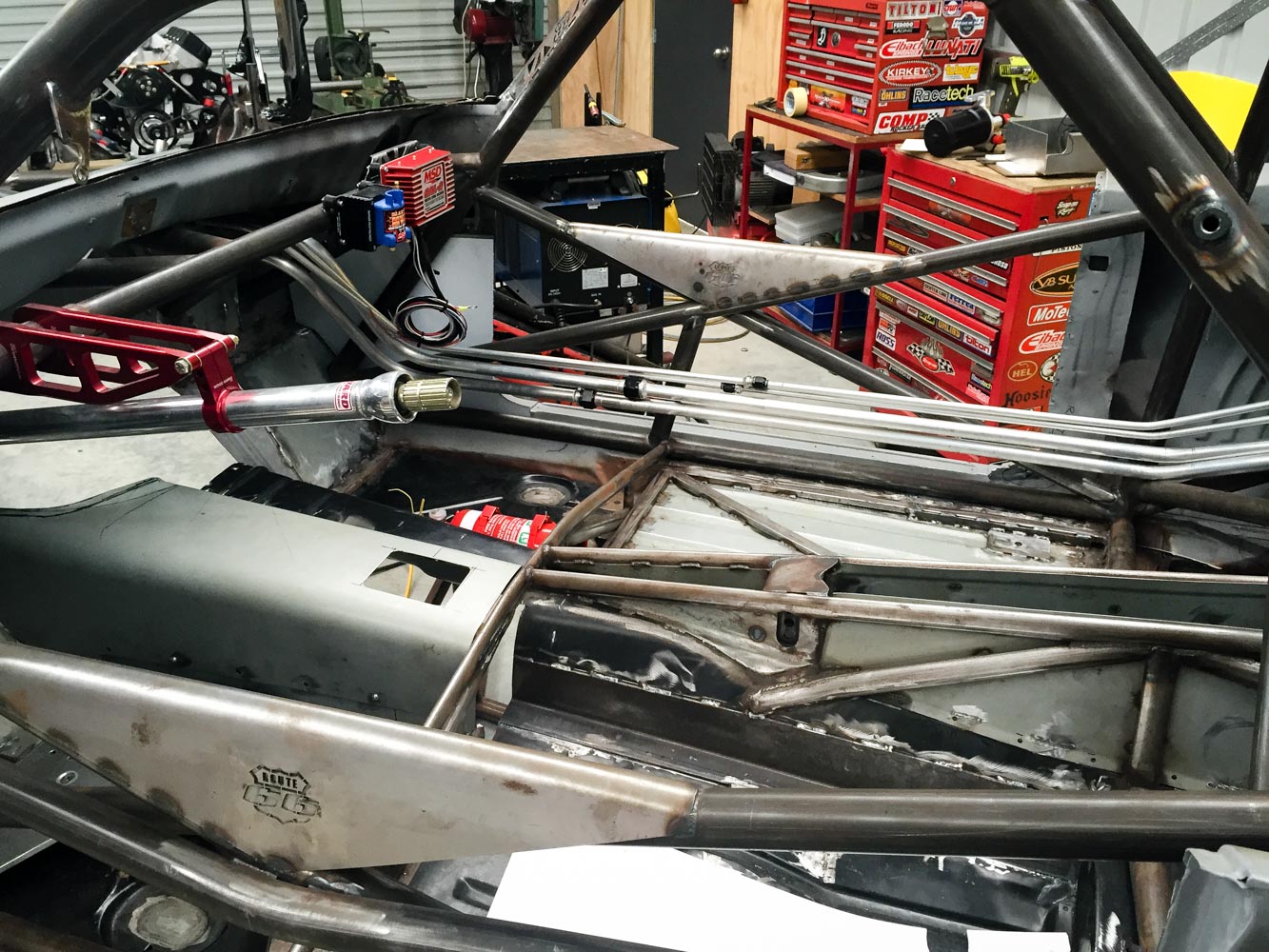data-animation-override>
“Keep up to speed with New Zealand’s most exciting race series — Enzed Central Muscle Cars”

Camaro coming together
With Brendan Neiman’s ’68 Camaro now away for wiring, the team at MRX has shifted its focus to the ‘69 Camaro of previous Group 1 champion Steve Ross. Like Neiman’s car, Ross’ car is also being built for Group 1, using only the best bits available.
Currently, the fabrication and plumbing side of the car is the focus, with the goal of having it all assembled before being stripped down for powder-coating.
Mechanically, the car will run a 358ci SB2 Nascar-style Chev engine along with G Force four-speed dog box and MRX-designed and -built three-link rear end. With Steve’s talents behind the wheel, the Camaro will certainly be one to watch on its completion.

Bathurst race format confirmed
While it may seem like it’s all happening quickly, the behind-the-scenes action to get the upcoming Bathurst trip organized has been ongoing for many years now. That said, all the finer details are now falling into place, with 13, 40-foot containers now confirmed to make the trip across the Tasman containing 26 cars and spares.
The race format has also been confirmed. There will be three six-lap races, each with a formation/warm-up lap. While Australian Touring Car Masters (TCM), which CMC is competing against, is used to the rolling-start format, it’ll be interesting to see how the locals take it. The hard part of course will be ensuring that the formation is held across the start line. We can only imagine the thunderous sound of 50 muscle cars as they hit the gas simultaneously!
With tight time restrictions to ensure live TV coverage of the main game, the goal is to make sure there are no yellow-flag incidents, as these will severely impact track time.
The race order is likely to be a scratch race first; a second race with the a percentage of the top cars of the field reversed and sent down the back; and the third, to be known as the Trans Tasman Cup, with the grid forming up in the usual two lines astern, with a TCM car and CMC car placed alternately in both lines.

Commodore power-up
After competing in almost every conceivable speedway class, as well as in various Targa events, Wellington’s Tony Barrow tried his hand at Central Muscle Cars (CMC) this season, with great success. His vehicle of choice, a VK Commodore, was purchased as ex Trans Am Light, and had been sitting in a shed for a few years before he got his hands on it. To get a handle on the car and the class, Tony ran the car essentially as purchased, complete with underpowered 308 engine producing a fraction of the power of some of the big-hitters.
With the potential of being involved in the upcoming CMC trip to Bathurst, though, that engine combo, and the car in general, is currently receiving an off-season overhaul.

The engine side is being taken care of by Rossco’s Engine Services and will see a capacity increase to 355ci along with a set of VN-style heads being fitted. At the same time, the Richmond five-speed gearbox will be freshened up, as will the diff. The engine bay is also set to receive a tidy up by Red at Waikanae Panelbeaters before the new engine is dropped back in.
Some may recognize the car’s current graphics scheme as that used by Tony’s father, Dave, in partnership with John Billington, back in the late ’90s. Tony mentioned that if a sponsor were to come on board, he’d be happy to change that. For now, though, it’ll remain.
With the newly added horsepower, we have no doubt that Tony will become one to watch in Group 2 in the coming season.




